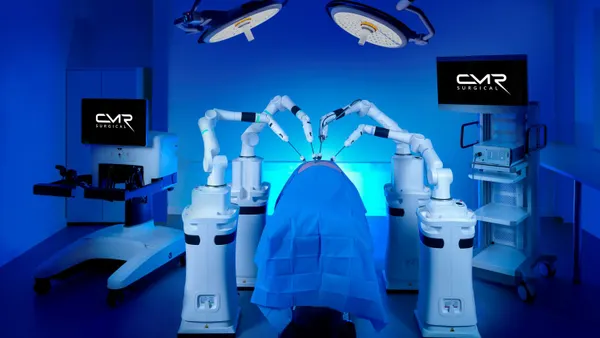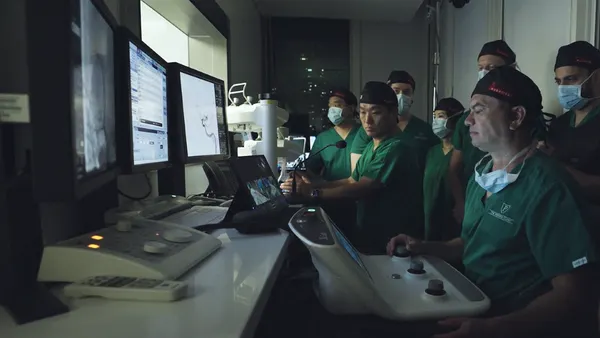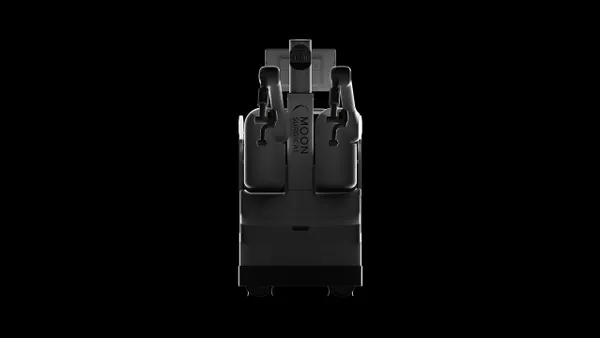Dive Brief:
- Continuous glucose monitor manufacturer Dexcom forecast a slight uptick in its profit margin in 2020, even while anticipating less revenue per patient, as outlined by execs on a fourth quarter earnings call Thursday.
- Analysts at Jefferies suggested more pharmacy sales and lower prices can help the diabetes tech "move on offense" against its chief rival, Abbott's FreeStyle Libre. Abbott has "staked its position on a lower price point," meaning that Dexcom lowering its price point "opens a lot of doors."
- Another area where Dexcom may overlap with Abbott's strategy is in heavy direct-to-consumer advertising. "It's one of the highest returns on any investment we can make in the company," CFO Quentin Blackford said Thursday, predicting returns on some of those investments late in 2020. Anticipating demand for its CGMs, Dexcom also plans to begin work on a third, international manufacturing facility, the company announced.
Dive Insight:
Dexcom reported roughly 650,000 active CGM users around the world consistently reordering from the company. Beyond its mainstay Type 1 diabetes market, the non-insulin-dependent Type 2 diabetes market "would be the next logical kind of lowest hanging fruit for us," said strategy EVP Steven Pacelli, followed by CGM use in the hospital and among pregnant women.
Although Dexcom released preliminary results the week of the J.P. Morgan Healthcare Conference in January, Thursday's call featured some new figures to pique interest. For one, at $462.8 million, actual fourth quarter revenues topped those teased a few weeks ago by close to $6 million. Dexcom affirmed its prediction to hit revenues between $1.725 billion and $1.775 billion in 2020, or 17% to 20% year-over-year growth.
Dexcom also estimated profit margin for 2020 of 64%, up from roughly 63% during 2019, its first full year of GAAP profitability. That growth is expected despite declining revenue per patient, a headwind Blackford estimated will cost about $150 million in 2020.
The transition to pharmacy sales has been "choppy," CEO Kevin Sayer said, but the company still contends easier access will drive up product use.
Jefferies analysts predicted gains to come from improved manufacturing efficiency, which Dexcom said it's prioritized in developing its newest CGM product, G7. Dexcom reiterated plans for a full rollout of G7 in 2021, a target that will require it to stick to an ambitious timeline for scaling up manufacturing capacity.
G7 will be far cheaper to produce than currently marketed G6, Blackford said. "From my perspective, all that does is open up even greater opportunity to compete in lower-priced channels if we need to, to be aggressive in the marketplace to push volumes in a way that we need to."
In that vein, Dexcom announced early plans to identify and build a third manufacturing site, outside of the U.S., beyond its capabilities in San Diego and Mesa, Arizona. "These things take multiple years to stand up. We won't be producing out of that facility for a couple of years here," Sayer said. Accordingly, investors should expect capital expenditures to rise from 2019 to 2020.
Dexcom also expects a sales bump from growing use of several new insulin management systems compatible with its G6 CGM, including Tandem's recently FDA-approved Control-IQ, Insulet's forthcoming Horizon, which Dexcom said began a pivotal trial in December, and potential connected pens from Eli Lilly, for which Dexcom signed a commercial agreement late last year.
Sayer also addressed a tech problem in late November which caused a temporary down period for its Share and Follow apps, which allow remote tracking of a CGM user's blood glucose data. Customers criticized the company for not having a better communication system in place to immediately notify users they could not rely on the feature.
In recent weeks, Dexcom launched a system status page on its website that provides 24/7 updates on system functionality. Sayer said the company is in "the final stages" of rolling out an in-app messaging system for faster communication with customers.












